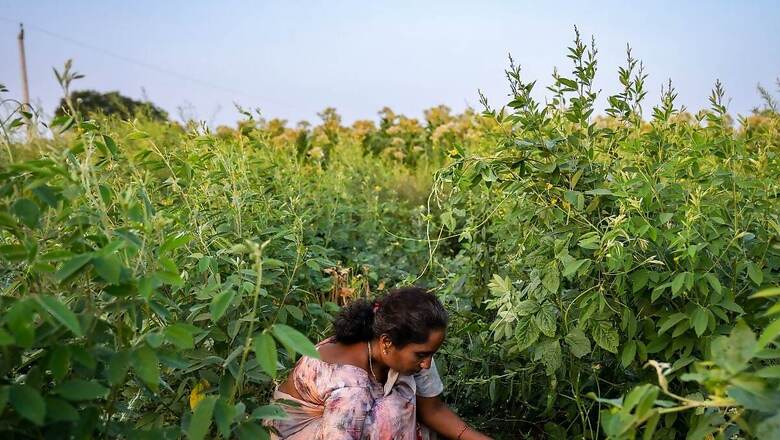
views
Over a decade back, the Food and Agriculture Organisation (FAO) had estimated that equitable access to women could increase food production by as much as 30 per cent, thereby reducing the number of hungry people worldwide by 100-150 million. The striking statistic has, however, not translated to action on the ground with women still largely operating on the fringes of the agricultural sector.
This underrepresentation of women is seen in India as well. Small and marginal farmers constitute almost 80 per cent of Indian agriculture, with women at the margins in nearly all aspects of food production. Climate change and recurring extreme weather events have not only aggravated food and nutrition security but also the burden on and vulnerability of women and children.
Women, especially those in the Global South, play a critical role in agriculture. From sowing to weeding to harvesting to storage, women do most of the agricultural work. But when one thinks of a farmer, the dominant image that comes to mind is of a man wearing a pagdi or topi, standing amidst agricultural fields.
There is an unconscious bias at work.
During my days of grassroots work on agriculture in south Gujarat, we once used the Harvard framework to understand the gender roles and division of labour among men and women working in the fields. The results were eye-opening.
From domesticating crops to conserving the seeds and passing the wisdom across generations, the role of women has been seldom acknowledged. Being custodians of traditional wisdom, synthesised through years of experimentation, women have ensured that heirloom seeds are passed across generations and the rich agricultural diversity is conserved.
The existence of such indigenous resilient food systems has ensured that superfoods like millets exist today and a gene pool is available to prospect for future possibilities to solve global hunger and nutrition. Conservation and revival of traditional seeds by Dalit women of Zahirabad block, Telangana, is the widely celebrated present-day exemplar.
We need to change the ‘identity’ of the farmer if we are to get women gainfully employed in agriculture. This would need targeted gender sensitisation leveraging behaviour insights towards socio-normative changes. The starting point would be unconscious bias training of the agricultural department personnel, especially the frontline extension staff.
In addition to shifting perspectives, it is imperative to establish mechanisms that improve women’s access to markets, credit, and resource control. Among these, land rights emerge as the most crucial concern. Having a woman’s name on the ‘7/12’ – a document that serves as proof of land ownership in rural areas. Although they play a major role in operations, women’s access to and control over land is minimal. The last agricultural census highlighted this gap with data showing women holding land titles to only 14 per cent of the total agricultural land.
The smaller size of the land holding and the inferior quality further exacerbate the disparity. While development indicators for women, like education, employment, etc., have steadily improved over the years, there has not been significant progress on women’s land ownership.
The UN Sustainable Development Goals (SDGs) underline the criticality of equitable and secure land rights for achieving food security, improved nutrition, and ending poverty. Therefore, women must gain more control over resources and access to inputs and other support systems.
The Government of India and some state governments have initiated a few reforms, viz., amendment to the Hindu Succession Act and initiatives like awarding joint title in land in Forest Rights Act settlements. But much more remains to be done.
The case for women-centric food production systems is not only for gender equality or empowerment or because of the FAO-estimated $1 trillion increase in global GDP. Women have been the cornerstone of food systems because of the multiple roles they play across the production life cycle. Policies and programmes focusing on sustainable food systems need to acknowledge the critical role women play in anchoring and furthering the system.
Only through concerted, multi-pronged initiatives which address structural barriers can we ensure the transformation of women’s place in agriculture from that of a mere ‘worker’ to that of a farmer — a custodian, caretaker, and provider of the world’s food, truly embodying the spirit of Annapurna.
The author is Co-founder and Chief Knowledge Officer of Sambodhi Research & Communications, a Social Impact Advisory. Views expressed in the above piece are personal and solely those of the author. They do not necessarily reflect News18’s views.















Comments
0 comment